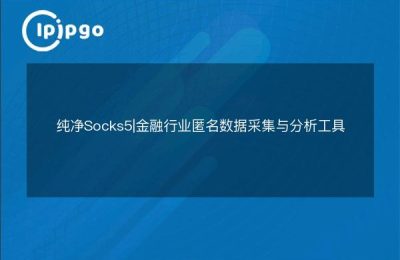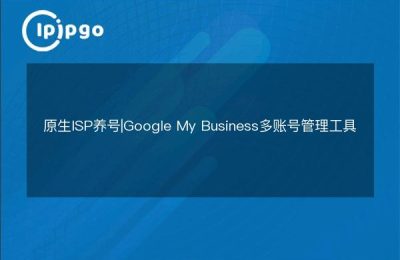
The heart is not as good as the action, and the words are not as good as the practice. As a member of the modern human race, we often use browsers to browse various web pages, and in the process of browsing web pages, we may encounter certain situations that require the use of a proxy server. So, how to use HTTP proxy correctly in IE browser? Next, I will provide you with a detailed introduction.
Step 1: Choose the right HTTP proxy server for you
Before using an HTTP proxy, we first need to find a suitable proxy server for us. A proxy server acts like a middleman, it can send and receive network requests instead of us, thus serving to hide our real identity and break through network restrictions. Currently, there are many free and paid proxy servers available in the market, you can choose a cost-effective proxy server according to your needs.
Step 2: Configure the HTTP proxy settings for Internet Explorer
After finding the proxy server, we need to configure it into Internet Explorer. The specific steps are as follows:
1. Open Internet Explorer and click the Settings button in the upper right corner, select "Internet Options".
2. In the pop-up window, select the "Connections" tab and click the "LAN Settings" button.
3. In the LAN Settings window, find the "Proxy Server" column, check "Use proxy server for LAN", and then click the "Advanced" button.
4. In the Advanced window, find the "HTTP" field, enter the IP address and port number of the proxy server, and then click "OK".
At this point, you have successfully configured the HTTP proxy server into Internet Explorer. Next, let's test if the configuration is successful!
Step 3: Test whether Internet Explorer successfully uses the HTTP proxy
To verify that the proxy server we configured is working, we can visit a website that displays your real IP address, such as "https://www.ip138.com". Under normal circumstances, the site will display the IP address of the proxy server you are using, not your real IP address.
Of course, if you are a tosser and want to verify if the proxy server really works, you can try to visit some websites that are restricted in mainland China, such as Google, Facebook, etc. If you can successfully open these sites, it means you have successfully used an HTTP proxy.
Step 4: Notes and Advanced Uses
There are a few more things to keep in mind when using HTTP proxies, so let's take a look at them!
1. Choose a stable and reliable proxy server. Some free proxy servers may be slow or unavailable due to excessive access, so it is recommended to choose some paid ones or those with a good reputation.
2. Update the proxy server at any time. For some reasons, the IP address of the proxy server may be blocked, resulting in no normal access. Therefore, it is recommended to update the IP address of the proxy server regularly to ensure the availability of the proxy server.
3. Pay attention to privacy and security. In the process of using HTTP proxies, there is a possibility that the proxy server may steal your private information since all web requests pass through the proxy server. Therefore, when choosing a proxy server, be sure to select a reputable provider to ensure that your privacy and security will not be jeopardized.
In addition to the basic use of HTTP proxies, we can further explore other advanced uses, such as how to configure the proxy server username and password, how to use different proxies for HTTP and HTTPS requests respectively. These advanced usage methods can be flexibly configured according to individual needs.
The use of HTTP proxies in Internet Explorer can not only help us realize the purpose of hiding our real identities and breaking through network restrictions, but also help us manage our network traffic more flexibly. I hope that through the introduction of this article, we can let you have a more in-depth understanding of the HTTP proxy in Internet Explorer, and be able to use it freely in the future. Let's enjoy a more free and convenient network world together!








